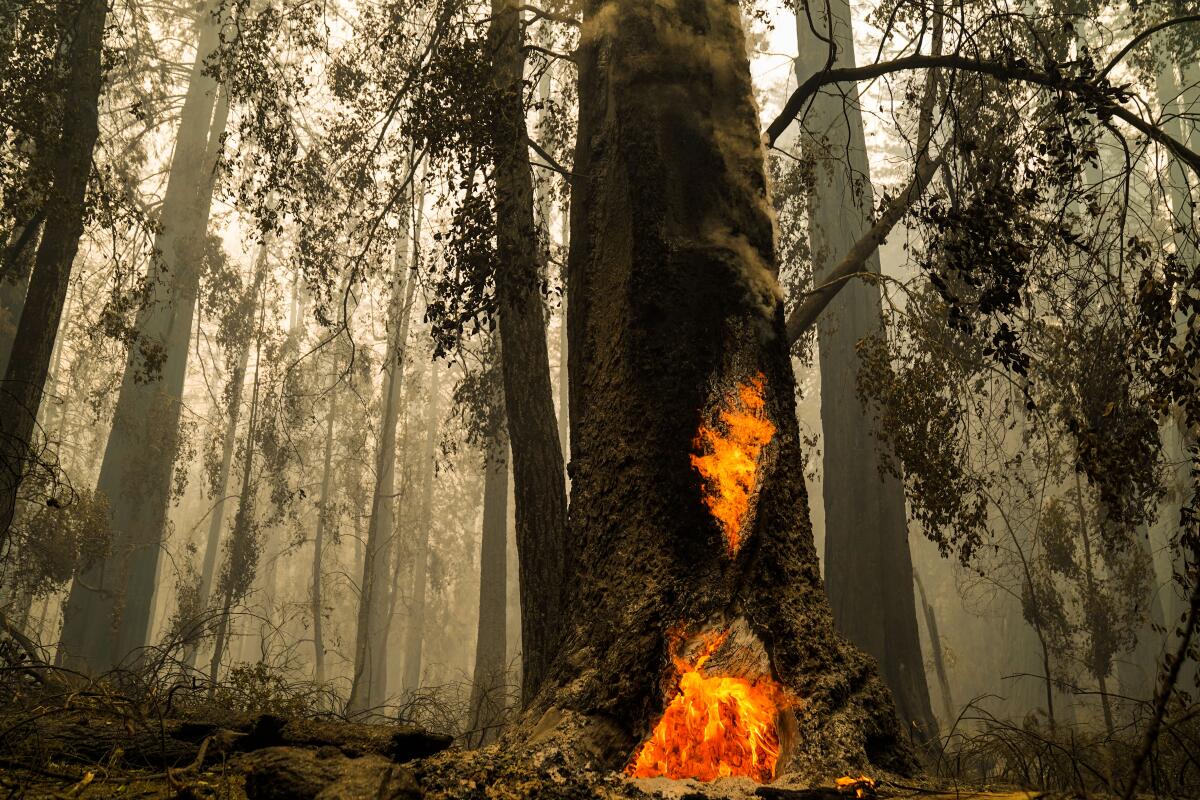Editorial: California is on fire again. Get used to it

- Share via
Fire season has barely begun, and California has already had two of the three largest wildfires in its recorded history. And they are burning through Northern California at the same time, forcing thousands of people to flee their homes during a pandemic. As if 2020 couldn’t get any worse.
And yet, this terrifying start to fire season was entirely predictable. Forecasters have repeatedly warned that climate change will fuel larger, more frequent and more devastating wildfires in the state. And that’s what we’re seeing. The 10 largest fires in the state have occurred since 2000.
Higher temperatures and prolonged droughts are making more areas of the state vulnerable to fire, including geography that has been considered lower risk, such as the usually damp, cool coastal redwood forests of Santa Cruz and San Mateo counties that have burned over the last week. The fires began the same week that Death Valley hit 130 degrees, the hottest temperature recorded on the planet in almost a century.
There was little the state could do to prevent these fires. They weren’t caused by poorly maintained power lines or sparks from a vehicle. Instead, thousands of dry lightning strikes have set off many small fires that merged into conflagrations. Those included the LNU Lightning Complex Fire, which covered 350,000 acres from Napa to Colusa counties as of Monday, and the SCU Lightning Complex fire, which had charred 347,000 acres from Santa Clara to Stanislaus counties.
Given the size, severity and number of fires, there simply are not enough firefighters or equipment available in California or neighboring states to respond. The Western U.S. is under siege, and we are unprepared.
As bad as California’s wildfires are now, the coming years are likely to be even worse as the planet continues to warm. And it’s not just fires. The state is facing more floods, coastal erosion and deadly heat waves.
California is particularly vulnerable to the effects of climate change, but we are not alone. Intense weather events are becoming more common around the planet, and they will overwhelm communities unless we act now. That means, rather than prolonging our reliance on fossil fuels, doing everything possible to slash the greenhouse gas emissions that are warming the planet. And at the same time, it means doing everything possible to adapt communities and infrastructure to the reality that climate is already creating environmental havoc.
More to Read
A cure for the common opinion
Get thought-provoking perspectives with our weekly newsletter.
You may occasionally receive promotional content from the Los Angeles Times.









